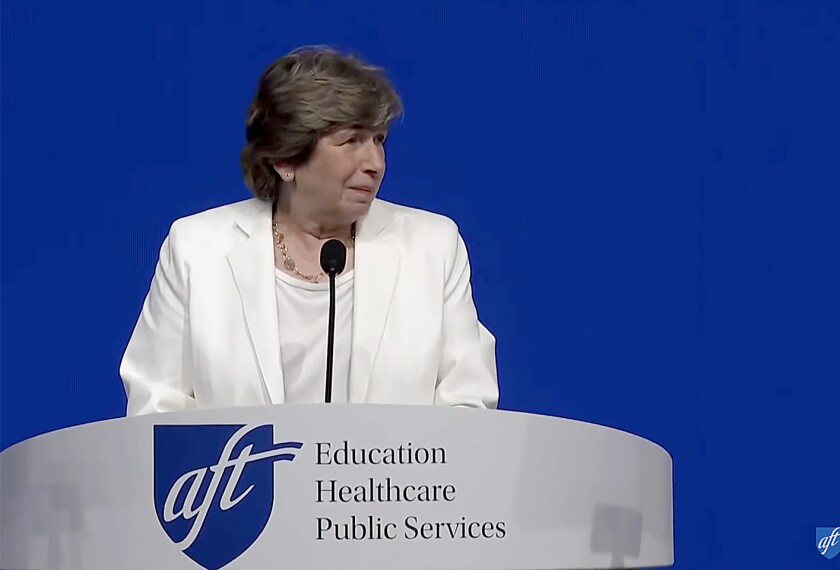''Being necessary to good government and the happiness of mankind, schools and the means of education shall forever be encouraged.”
With those words, the Northwest Ordinance, a body of law passed by the Second Continental Congress on July 13, 1787, firmly established education as a regional responsibility. In fact, 9 1/2 weeks later, when the delegates signed the first draft of the U.S. Constitution, they would not see “education” or “educate” among the document’s 3,500 words.
But 80 years later, in 1867, disheartened by rampant illiteracy and the decrepit condition of public schools in America’s 37 states during the post-Civil War Reconstruction era, President Andrew Johnson saw a role for the federal government in education. Through an act of Congress, he established the first federal Department of Education and gave its four-person staff the mandate of “collecting such statistics and facts as shall show the condition and progress of education in the several States and Territories.” The department’s commissioner was ordered to report its findings to Congress annually.

Only two reports were ever filed. Concerned the data gathered by the department would give the federal government “controlling power over the school systems of the states,” Congress promptly downgraded it to the Office of Education in 1868, and for the next 111 years, federal education efforts were orphaned from one federal agency to another.
The U.S. Department of Education finally found a home during the Jimmy Carter administration. In his campaign for the White House, Carter formed a political alliance with the National Education Association and promised to elevate the Office of Education to Cabinet status. This alliance is described in detail in a 46-page memo chief of staff Hamilton Jordan wrote to the president in July 1978, in which he bluntly offered this advice: “I would strongly recommend that you support the creation of a separate Department of Education for the following reasons: Your unequivocal promise in the campaign to do so. The teachers of this country have been our political friends in the past and can be our valuable political allies in the future.”
While much of the Department of Education’s public notoriety since it began operations in the spring of 1980 has focused on reauthorizations of the 1965 Elementary and Secondary Education Act, its seminal contribution to the country continues to be quite Johnsonian: an unwavering commitment to collect and report, in an unbiased manner, data on the “condition and progress of education in the several States and Territories.”
Is America content with the current public education system we have in place?"
The Department of Education’s 1983 report “A Nation at Risk” warned against “a rising tide of mediocrity that threatens our very future as a Nation and a people.” Thirty-three years later, the “condition and progress of education in the United States” remains mired in mediocrity. That is a reasonable conclusion one can make after reviewing the 2016 results of Education Week’s Quality Counts annual report this past January, which ran with this headline for its national summary report online: “Nation Earns a C on Quality Counts Report Card.” When Education Week‘s results are factored in with the poor performance for U.S. 15-year-old students in the 2012 Program for International Student Assessment, or PISA, it is difficult to find fault with former U.S. Secretary of Education Arne Duncan’s comment, “We can quibble, or we can face the brutal truth that we’re being out-educated.”
So here’s an idea.
Harken back to the regional educational mandate of the Northwest Ordinance and the federal big-data mandate of the Andrew Johnson administration. Why not restructure the U.S. Department of Education as the Federal Education Board? And then segment it into 12 regions that align with the 12-district structure of the Federal Reserve Board.
Led by a chairperson appointed by the president to a six-year term, the Federal Education Board would then report to Congress, just like President Andrew Johnson’s original mandate for the Department of Education. Each education region would be managed by a president elected to a 10-year term by the region’s chief state school officers. The key responsibilities for regional presidents would be to (1) collaborate with the regional state chiefs to fashion educate-to-employ policies that map to the primary economic activity of the region, like manufacturing in the Midwest, computer science on the West Coast, or biopharma in the Northeast; and (2) work closely with the chairperson of the Federal Education Board to manage the distribution of ESEA funding within the region.
Every quarter, the Federal Education Board would meet in Washington, D.C., to discuss the Johnsonian mandate of reviewing the “condition and progress” of the overall American education system. At the conclusion of this meeting, the Federal Education Board would release a letter-grade report for each region on teacher quality, infrastructure, technology, student performance, digital curricula, public-private partnerships, and job readiness/unemployment.
In this new alignment, the statistics-gathering efforts of the National Center for Education Statistics would be moved into the 12 regions. And eight times a year, similar to the Beige Books released by Federal Reserve districts, regions would be mandated to release statistical reports about education quality in their region.
Is a Federal Education Board, and 12 regional “Baby Ed.s,” the answer to the plethora of challenges facing public education in America? That is not the key question to ask.
A more important two-part question is this: Is America content with the current public education system we have in place? And does our nation believe we need a serious, bipartisan, national discussion, and subsequent long-term strategy that transcends presidential-election cycles on what changes must be made to the American public education system?
The answer to these questions will determine the future trajectory of our nation’s economy, the global employability of Americans, and the strength of our national security.




